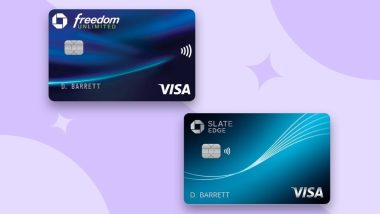Online banking, often referred to as neobanks (we’ll use both terms in this article), has become more popular over the past decade. Not to be outdone, most traditional banks have improved their online presence and introduced comparable digital services.
But with all these new banking options available to consumers, it can be difficult to know which is best for your own financial goals: traditional or neo-bank.
Let’s break down the similarities and differences between neobanks and traditional banks so you can make an informed decision.
There is a difference between a neobank and a traditional bank with a digital presence
As neobanks grow in popularity and traditional banks try to compete by building a stronger digital presence, at first glance it might seem that they are now all pretty much the same.
And though they may offer some same services, neobanks and traditional banks remain quite different in terms of their functions and capabilities. Here are some of those differences:
Neobanks (online banks)
- No physical locations – Neobanks do not have physical locations that you can visit, so you will be doing all your banking via the web or mobile app.
- Accelerated account opening process – Opening an account with a neobank is quick and easy. You will need to provide some personal information and identification documents, but once you identify yourself, your new account can be up and running within minutes.
- Convenient interface – Neobanks focus on user experience, making banking transactions as easy as possible through online platforms.
- Some ATM fees – Online banks may offer ATM access, but you will likely face in-network fees.
- Few or no fees – Neobanks are the clear winner in terms of fees. They don’t always have the costs that traditional banks have – no buildings means less overhead – so they can pass on some of those savings to the client.
- Best Interest Rates – Neobanks usually offer better interest rates due to low overhead costs.
- Phone or online customer support – Although neobanks have customer support groups, more often than not you will search support forums or chat with an online bot to get the help you need.
Traditional banks
- There are local branches – Banks have real buildings called branches that you can visit on foot or by car. The branch staff usually consists of bank tellers and other employees who can take care of all your real life banking needs.
- Opening an account may take some time – In a regular bank, you will most likely have to bring documents and visit a branch during normal business hours. You can wait from five minutes to an hour to open an account.
- Some Online Banking Options – Traditional banks often offer a banking website or mobile app for some of your transactions, although they may not be as reliable as neobank.
- Large network of ATMs – Since traditional banks have bank branches, they will also offer access to ATMs in their ATM network.
- Usually come with a fee – A traditional bank may charge $10 or even $15 a month for a checking account, as well as other fees.
- Lower interest rates – You can get 0.10% per annum (or even 0.01% per annum) in savings accounts at a traditional bank.
- Personal customer service “This is where traditional banks certainly have an advantage. After all, part of all that overhead that makes them charge more is staffing bank branches with friendly faces.
Read more: History of the largest banks in America
Benefits of neobanks
Source: Giphy.com
Neobank is a new concept for many, which can cause some distrust, especially among older consumers. But neobanks are generally as safe as traditional banks, and their funds are insured by the FDIC.
Not only that, over the past few years we have all become much more digitally savvy, so a digital-only approach is much more suited to today’s market than it was in previous generations.
Let’s look at some other benefits:
The best prices
One of the most significant advantages of most neobanks is that they usually offer much better interest rates on your savings accounts. Because neobanks have lower overheads, they can pass on these savings to the client.
Interest rates in neobanks can be 10 times higher than in standard banks. Of course, it may not be as much as you hope, for example, 1.0% per annum, but it is still better than the 0.10% per annum of conventional banks.
Read more: Best Savings Accounts on the Internet
Low (or zero) fees
In addition to competitive interest rates, most neobanks offer their customers significantly lower fees than traditional banks.
Some neobanks offer free checking or savings accounts with no minimum balance requirements. This perk alone can save you about $10 or $15 a month, depending on the bank.
You can even find a bank that doesn’t charge ATM, transfer, or other fees.
Read more: The best online checking accounts
Who Should Use Neobanks?
- People who live their best online lives – Neobanks will require you to use the application or website conveniently in order to use your account. You can do it all from your laptop or phone: check your balance, order a new card, deposit a check, transfer money and more, and often with virtually no fees. If you can confidently open the app and follow the instructions on the screen, then using neobanks will be very easy.
- People who are tired of paying for their money – One of the best things about neobanks is that most accounts are free to open and maintain. And most accounts have no minimum balance requirements, making them attractive to young, tech-savvy consumers like us with little money but big financial goals.
- People who don’t have much time Neobanks use streamlined transactions to provide a faster experience. Services such as opening accounts, depositing checks, and sending money to friends are quick and easy. And with 24/7 online customer support, a person with night shifts and account issues won’t need to call out of work to resolve their issues.
Benefits of traditional banks

Source: Tenor.com
While neobanks seem extremely attractive, there are some advantages to using traditional banks. Neobanks are a newer concept, and those who are used to traditional banking (especially older consumers) may not want to leave this routine.
Here are other perks:
personal service
A significant advantage is that traditional banks can offer you more personalized services. Depending on the bank you choose and the cashiers who work at your local branch, you may end up in a place where everyone knows your name.
These staff members can offer a more personal touch when customizing your banking products, such as loans and credit cards, based on your personal financial goals.
Traditional banks are definitely in your favor if you prefer a personalized approach to your banking experience.
Range of services
There are services that traditional banks can offer, but not neobanks. Consider services such as currency exchange and safe deposit box rentals thanks to the regular locations available.
Most traditional banks also offer a wider range of financial products. You can use one bank to do it all: buy a house, refinance a car, create emergency savings, invest for retirement, and manage your monthly checking account expenses. With neobanks, you may need to use different banks for different financial functions.
Read more: How to choose a bank: 6 signs you should pay attention to
Who Should Use Traditional Banking?
- People who value personal customer experience Traditional banks are the best option for those who are looking for a personalized approach to their banking services. You’ll be able to walk into your local branch and see a smiling face (instead of having to navigate through a maze of multiple choice support calls).
- People who deal with large amounts of cash − The branches that traditional banks have allow you to deposit and withdraw large amounts of money, as opposed to the daily fees set for neo-banks that strictly use ATMs.
- People who want to invest and finance together − A significant number of traditional banks offer investment services or partner with brokerage firms to offer this service to their clients. This benefit is attractive to those who are focused on accumulating wealth.
bottom line
Whether you choose a neobank or a traditional bank depends largely on your banking needs, not to mention your preferences and budget. For a low-cost, tech-savvy route, neobanks may be fine, while traditional banks may be faster for a high-cost, high-capacity route.
Remember that no law prohibits you from having only one account – you may prefer to keep your money in a traditional bank, but use an online savings account for higher interest rates. It’s your decision. Regardless of your decision, you’ll keep your money safe and secure so it can grow – that’s the whole point of a bank account, no matter where you put it.


